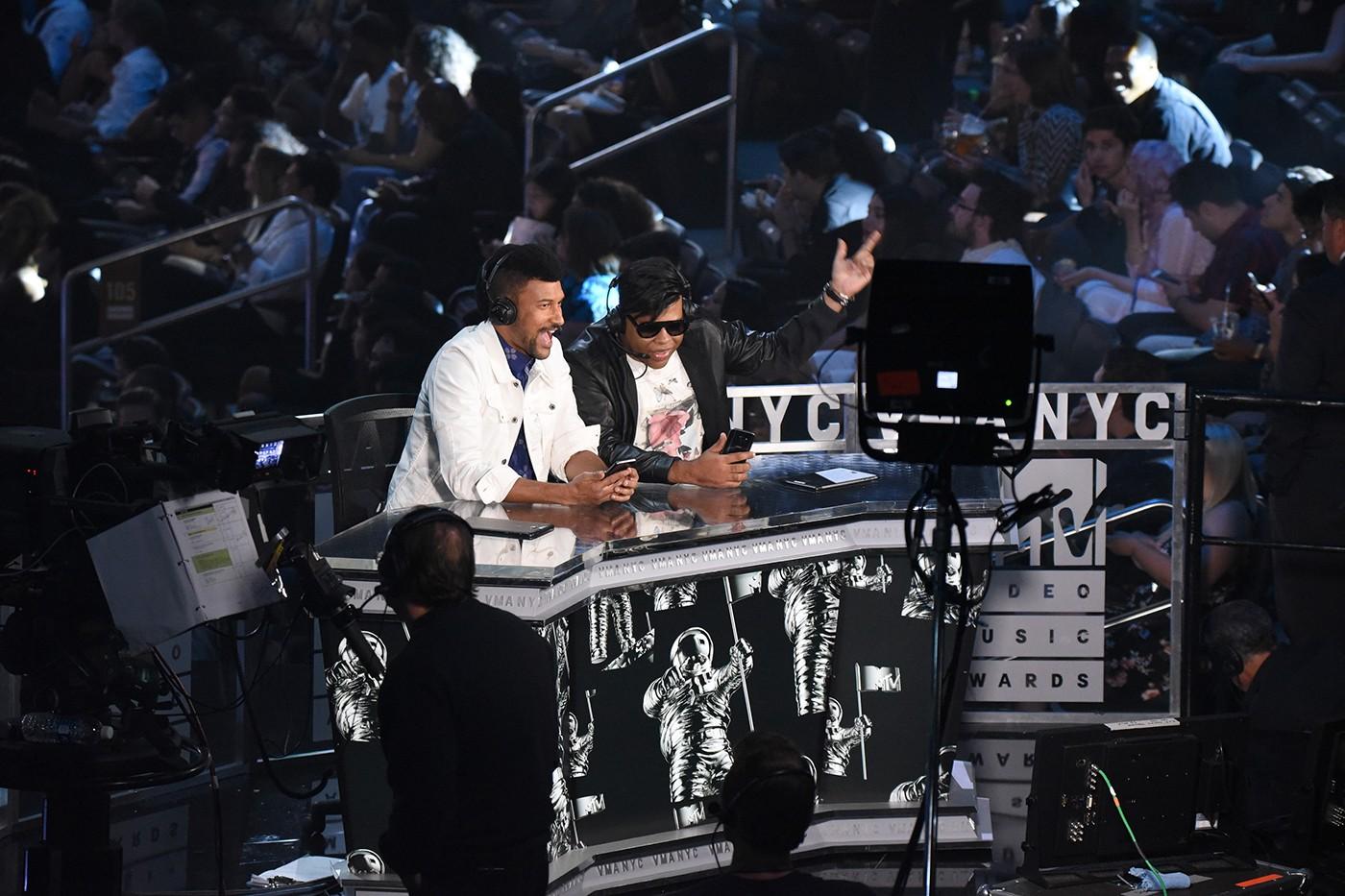
MTV just learned the problem with aggressively marketing your awards show toward the young, hip, and app-literate: They’ll pay attention, just on their terms, not yours. And their terms make you way less money — at least of the traditional TV-ad variety.
Ratings for the VMAs’ live telecast hit the internet on Monday, though a GIF of the final scene from Thelma & Louise would have sufficed: Just 3.3 million people watched the actual show on the actual network, down a full third from last year, and a heartstopping two-thirds from 2013, when more than 10 million viewers tuned in. Say what you will about Miley Cyrus, but PVC wedgies bring a crowd.
So where did all those phantom eyeballs go? Was the teens’ (justified) lack of faith in Kanye’s craaaaazy high jinks that extreme? Were they that invested in the fate of Chandra Kapoor and/or a genderless cat? Compelling explanations both, but Occam’s razor and the involvement of people under 25 dictate that the answer is, of course, Snapchat.
Variety broke down the multiplatform (read: anything that’s not plain Jane, power-up-the-living-room-set-at-8-sharp viewing) ratings data Wednesday afternoon. Pop some dramamine, because we’re in for some spin:
Which includes 21 million viewers for MTV’s Live Story on Snapchat, almost double last year’s live Snapchat viewership of 12 million — and more than triple the viewership on actual television, which added up to 6.5 million including Viacom’s all-hands, 11-network push. MTV president Sean Atkins insists the company was able to turn that massive pivot into cash through cross-platform deals with the likes of Taco Bell and Orbit, but reporter Todd Spangler points out that “not all those views deliver the same value to advertisers, and it seems likely that the boom in digital viewing isn’t offsetting drops on the TV side, at least not yet.”
It’s a broadcast version of the specter that’s been haunting the rest of media for years: More people may be consuming a cultural product overall, but they’re doing so in a way that’s less valuable to advertisers. Corporations still refuse to pay as much for a website banner ad (or in this case, a Snapchat spot) as they would for a print spread (or in this case, a 30-second commercial). And we all know how well depending on volume over value is working out for the written word. Which is to say: Even at a time when we’re drowning in programming, linear broadcast TV is starting to look more like a, er, house of cards.
The VMAs are obviously more vulnerable to generational shifts in viewing than most; it’s an occupational hazard of betting your relevance on the youth and their fickle, TV-phobic ways. But Snapchattin’, cord-cuttin’ teenagers grow into Snapchattin’, cord-cuttin’ adults, and it’s hard not to look at the numbers and see the writing on the wall. Other, older awards shows are already starting to feel the heat: This year’s Oscars plummeted to an eight-year low; the most recent Grammys hit a seven-year low; last year, the Emmys had their smallest audience ever. (There’s something especially foreboding about television’s awards show acting as a canary in the coal mine for … the rest of television.) Worse still, those shows and the geriatric academies they represent are far less equipped to meet viewers where they already are than the relatively agile, tech-fluent MTV.
Record-breaking “digital reach” is all well and good, but media is a business, and an audience is only as good as a network’s ability to turn it into revenue. For scripted series, that means solutions like converting low-rated series into streaming deals, and streaming deals into potential live viewers — turning Breaking Bad bingers into live audience, or cashing in on the rights to a less-watched, less-profitable show like Crazy Ex-Girlfriend. For the Olympics, it means ignoring bad ratings as long as the advertising remains high. And for sports like football, it means signing massive rights deals with cable companies — and Twitter, too. But for the big-ticket events like awards shows that don’t have that option, it won’t just mean a smaller slice of the pie — it could mean a smaller pie altogether.
